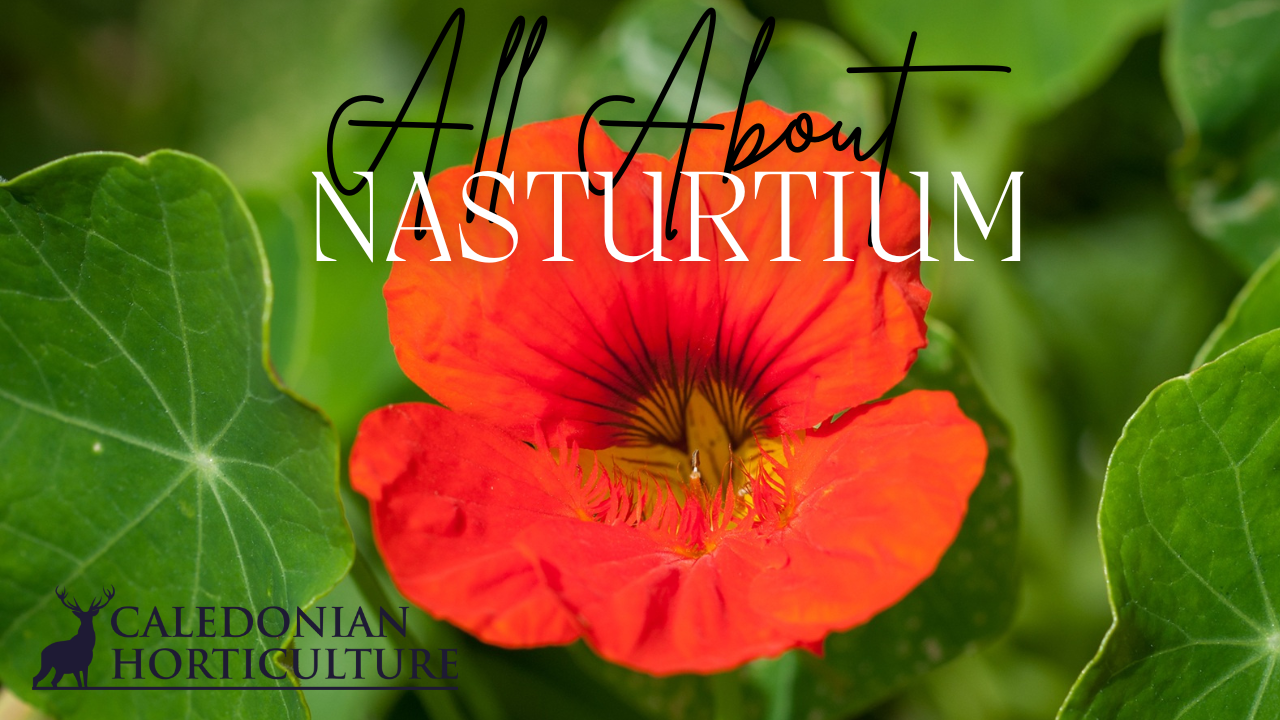Guest post blog by Katrina & Clayton
Nasturtiums (Tropaeolum majus) are vibrant, easy to grow plants that offer both ornamental beauty and edible parts. Their flowers and peppery leaves make them a favourite among gardeners in Scotland and beyond. Adaptable to the cool and often damp Scottish climate, nasturtiums grow quickly, thrive with minimal care, and provide a splash of colour to beds, containers, and borders. Their versatility and resilience make them ideal for gardeners looking to add low maintenance, pollinator friendly plants to their gardens.
Growing Nasturtiums In Scotland
Nasturtiums are annuals in Scotland, meaning they complete their life cycle in one season. However, due to their rapid growth and ability to self seed, they often reappear year after year in gardens. They flourish in the cooler summers typical of Scotland and don’t require intensive care or protection, making them particularly suited to the region’s unpredictable weather.
These plants grow in two main forms: bushy (compact) varieties, which are ideal for container growing, and trailing or climbing varieties, which can cover trellises, walls, or sprawl across beds. They typically bloom from June to the first frosts, offering a long season of colour and utility.
Nasturtiums are entirely edible and have been used in culinary traditions around the world. The leaves, flowers, seeds, and even unripe seed pods can be consumed, each offering a peppery, mustard like flavour.
Leaves: Young leaves can be added to salads, wraps, or used as a garnish. They have a bold, spicy flavour and are rich in vitamin C.
Flowers: The vibrant blooms are also edible and make a beautiful, zesty addition to salads, open sandwiches, and decorative platters.
Seeds: Green seeds can be pickled to create “poor man’s capers,” while dried seeds can be ground as a pepper substitute.
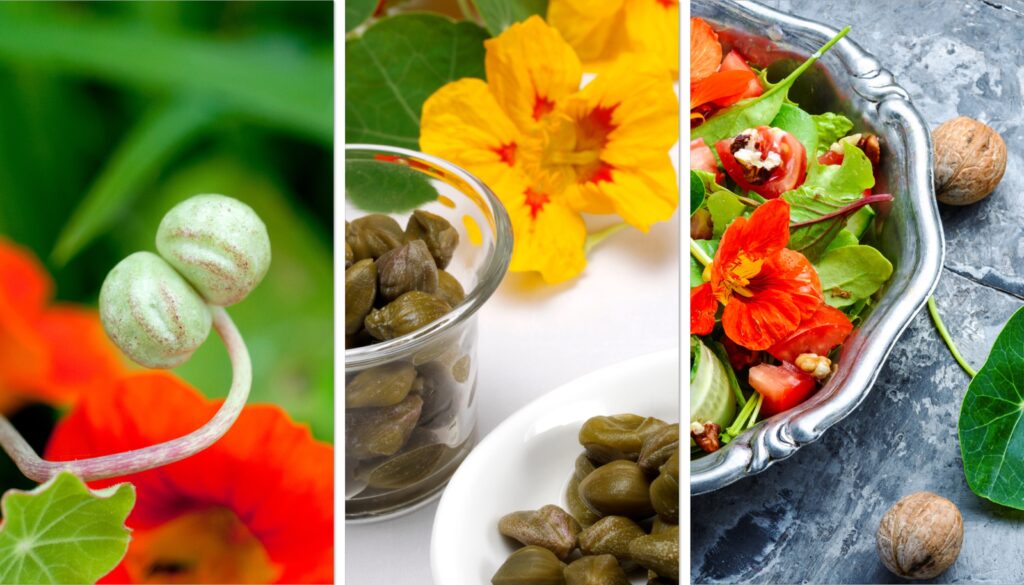
Planting
Nasturtiums are best planted from seed, as they germinate quickly and easily. In Scotland, sowing can be done indoors in April for earlier blooms or directly outdoors in late May once the risk of frost has passed. The seeds are relatively large, making them easy to handle.
For indoor sowing, place seeds in individual pots filled with general purpose compost. Keep them on a sunny windowsill and water regularly. Once the seedlings are sturdy and temperatures have warmed, they can be hardened off and transplanted outdoors.
For direct sowing, choose a sunny, sheltered spot and sow seeds about 2 cm deep and 25–30 cm apart. Nasturtiums are not fussy about soil and often do better in poorer conditions where they produce more flowers and fewer leaves. Overly rich soil can lead to lush foliage at the expense of blooms. We scatter seeds throughout our beds and food forest and they happily get on with finding their way and grow.
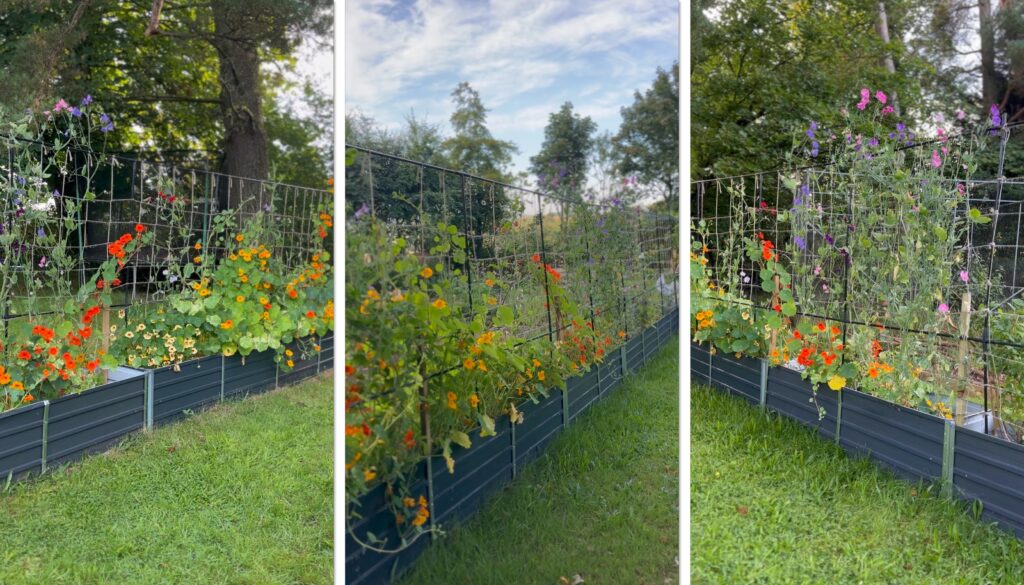
Care
Nasturtiums are among the easiest garden plants to care for. They require little attention once established and can tolerate light neglect. They prefer full sun but will grow in partial shade, although flower production may decrease with less light.
Watering should be regular but not excessive. In containers, they will need more frequent watering than in the ground, especially during dry spells. Avoid feeding with high nitrogen fertilisers, as this promotes leafy growth rather than flowers.
Support may be necessary for climbing varieties. A simple trellis, netting, or wall can guide their growth and create a striking vertical display. Bush varieties, on the other hand, are self supporting and work well in pots, window boxes, or at the front of borders.
Monitor for pests like aphids and caterpillars, which are particularly attracted to nasturtiums. This makes them useful as trap crops in companion planting drawing pests away from more vulnerable vegetables.

Companion Planting
Nasturtiums are stars in the world of companion planting. Their ability to repel or attract various insects makes them valuable in organic gardening and permaculture systems.
They are excellent companions for crops such as:
Cabbage and Brassicas: Nasturtiums attract cabbage white butterflies, which lay eggs on them instead of on your cabbages, acting as a sacrificial crop.
Tomatoes: They deter aphids and whiteflies, making them useful around tomato plants.
Cucumbers and Squash: Help reduce cucumber beetle populations.
Planting nasturtiums around vegetable beds can help reduce pest populations and increase biodiversity. Their brightly coloured flowers also attract pollinators like bees and hoverflies, further enhancing the health of your garden.
Best Soil for Nasturtiums
Nasturtiums prefer poor to moderately fertile soil, which is somewhat unusual for flowering plants. In rich soil, they tend to produce abundant leafy growth at the expense of flowers. Therefore, avoid overfeeding or enriching the soil too heavily before planting.
They need well drained soil to prevent root rot, especially in wet Scottish summers. If your garden soil is heavy clay, consider planting in raised beds or containers filled with a loamy, well drained mix.
Sandy or stony soils are ideal as long as they aren’t too dry. Nasturtiums can adapt to various pH levels, but a slightly acidic to neutral range (pH 6.0–7.5) is preferred. Adding organic matter like leaf mould can help improve drainage and structure without overly enriching the soil.
Mulching around the base of plants can help retain moisture and suppress weeds, especially in drier or exposed sites. However, avoid mulching too heavily or too close to the stems to reduce the risk of rot in prolonged wet conditions.
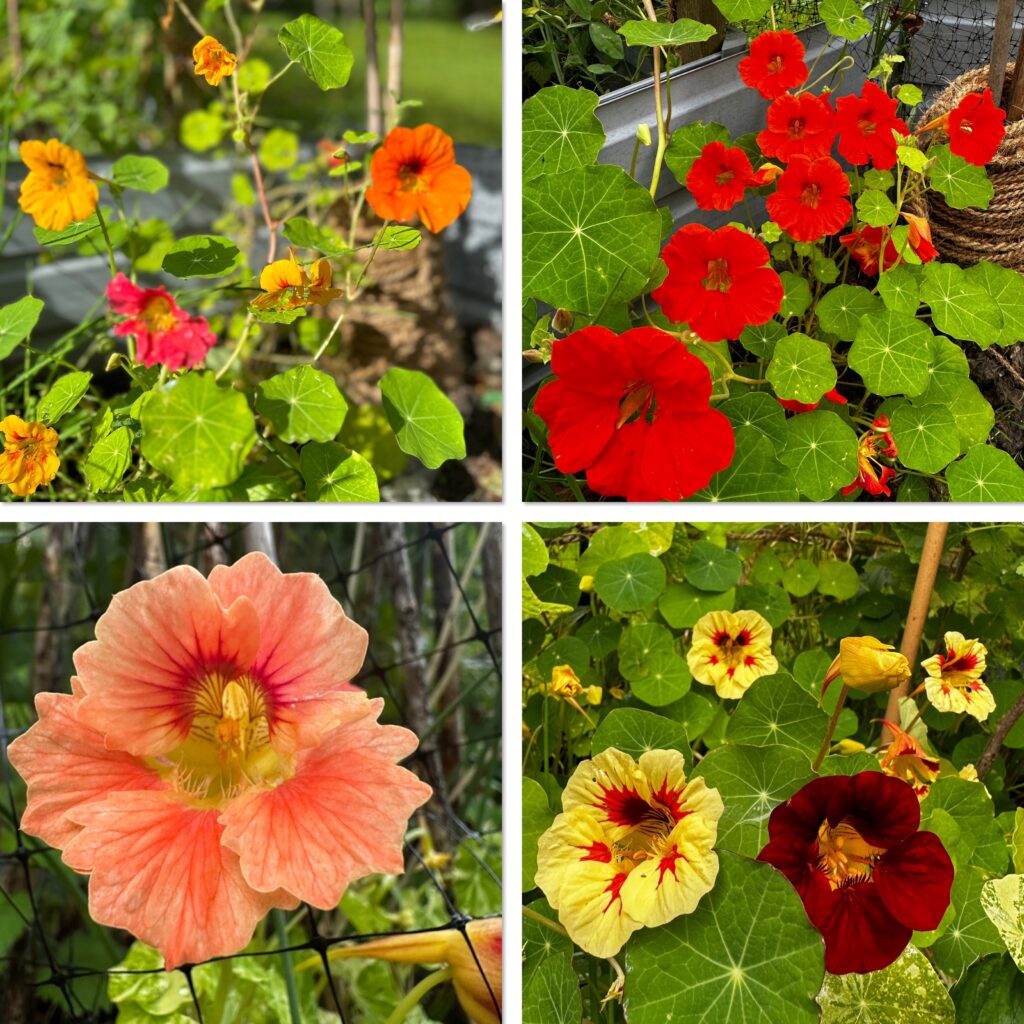
Nasturtiums are an excellent choice for Scottish gardens. Their adaptability to cooler, wetter climates, coupled with their vibrant flowers and edible parts, makes them both functional and decorative. Easy to grow from seed and self sustaining through natural reseeding, they require little in the way of ongoing maintenance.
By choosing the right location, providing basic care, and incorporating them into your companion planting strategy, you can enjoy the many benefits nasturtiums bring to the garden. Whether you’re looking to brighten up a border, create edible displays, or manage pests organically, nasturtiums are a delightful and practical addition to any Scottish plot.
Katrina & Clayton

Katrina & Clayton live with their family in East Ayrshire in Scotland and share their daily life in the garden on instagram @buildingfoodforest_scotland. They practice permaculture principles, reducing & repurposing waste whenever they can. Katrina shows how home educating in nature has helped Clayton thrive.
Clayton Completed The Grow and Learn Course with the Royal Caledonian Horticultural Society in 2022. This year he will be completing Level 2 Nurture Course. Clayton is 16, Autistic, Non Verbal & has been Home Educated for the last 6yrs. Both Katrina and husband Peter have studied the Permaculture Design Course PDC and PDC Pro over the last 5yrs, developing their garden from grass to an ongoing food forest.
They have featured on BBC Beechgrove Gardens, Gardeners World Magazine and write for Scotland Grows Magazine. Katrina has a series of children’s story books out following the life of Clayton in the garden. Available at Amazon.
See more and follow Katrina & Clayton at the links below:
-
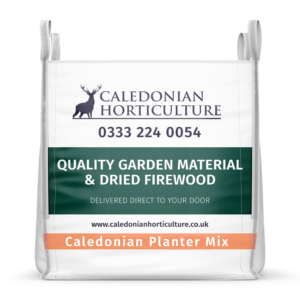 Builder’s Bag Planter Mix£79.00 inc VAT
Builder’s Bag Planter Mix£79.00 inc VAT -
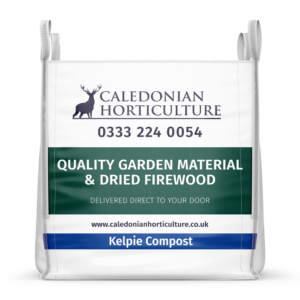 Builder’s Bag Kelpie Compost£72.00 inc VAT
Builder’s Bag Kelpie Compost£72.00 inc VAT -
 Builder’s Bag Green Goodness£52.00 inc VAT
Builder’s Bag Green Goodness£52.00 inc VAT

